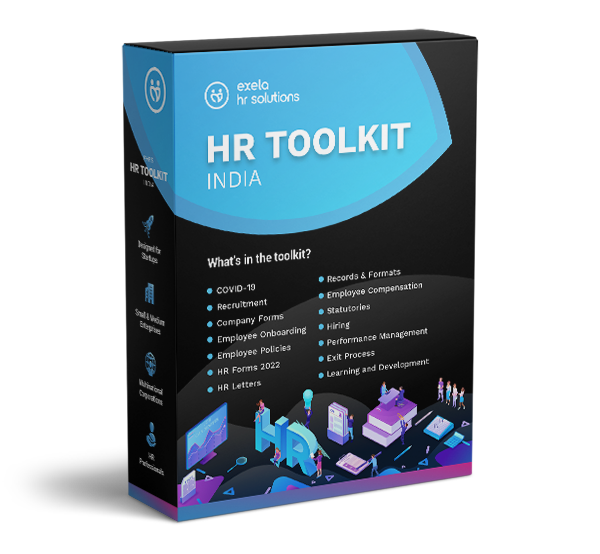
Businesses today are constantly challenged to find and attract top talent efficiently. The traditional hiring process, with its reliance on manual tasks, paper resumes, and time-consuming procedures, is often inadequate in meeting the demands of the modern workforce. Recognizing these challenges, organizations are turning to technology to revolutionize their recruitment strategies.
The recruitment process, historically viewed as a human-centric venture, is undergoing quite a transformation with the integration of advanced tech. This shift is not merely a luxury for large enterprises; it has become a necessity for organizations of all sizes seeking to remain competitive in the talent acquisition arena.
As the business landscape evolves, so do the expectations and preferences of job seekers. Opting for recruitment technology becomes imperative for organizations aiming to keep up with the pace of change and gain a strategic advantage in securing the best talent available.
By embracing technology in recruitment, organizations can streamline their processes, reduce time-to-fill positions, enhance the overall candidate experience, and make data-driven decisions.
Setting the tone for exploring the evolution of recruitment technology and its diverse applications, this blog talks about everything from Applicant Tracking Systems (ATS) to Artificial Intelligence (AI) in candidate screening to the use of video interviewing platforms.
The use of technology in recruitment is not just a trend but a fundamental shift that promises to redefine how businesses identify, engage, and hire their workforce. Read on to learn how you can leverage technology to transform your hiring processes and meet the dynamic demands of the contemporary workforce.
The Evolution of Recruitment Technology
Recruitment has undergone a significant transformation, evolving from traditional, manual processes to a dynamic and technology-driven one. This evolution is marked by key milestones, reflecting the industry's responsiveness to the changing needs.
-
Historical Perspective on Recruitment Methods:
-
Manual Processes: In the not-so-distant past, recruitment heavily relied on manual processes, including paper resumes, physical job postings, and extensive paperwork. This approach was time-consuming, prone to errors, and limited in its ability to reach a vast pool of candidates.
-
Job Boards and Online Portals: In the mid-1990s, the dot-com boom spawned numerous job websites, providing a digital platform for job seekers and employers to connect. The 2000s saw consolidation and fierce competition for innovative features. Job seekers adapted to evolving resume and search techniques, representing a significant leap forward in terms of accessibility and reach.
-
-
Emergence of Technology in the Recruitment Landscape:
-
Introduction of Applicant Tracking Systems (ATS): The late 1990s and early 2000s saw the emergence of ATS, marking a shift towards more systematic and organized recruitment processes. ATS streamlined resume storage, improved candidate tracking, and introduced a centralized application management system.
-
Integration of Social Media: The rise of social media platforms in the mid-2000s further revolutionized recruitment. LinkedIn, in particular, became a powerful tool for sourcing talent and connecting with professionals globally.
-
-
Key Milestones in the Development of Recruitment Technology:
-
Rise of Artificial Intelligence (AI): The 2010s witnessed a significant integration of AI in recruitment processes. AI algorithms were employed for resume screening, predictive analytics, and even chatbot interactions to engage with candidates.
-
Video Interviewing Platforms: With the advent of high-speed internet and advanced video conferencing technologies, video interviewing platforms gained popularity, providing a virtual alternative to traditional face-to-face interviews.
This evolution of recruitment technology reflects a continuous effort to overcome limitations, enhance efficiency, and adapt to the changing dynamics of the job market. The journey from manual processes to sophisticated AI-driven solutions underscores the industry's commitment to staying at the forefront of innovation. This history also sets the stage for understanding the current landscape of recruitment technology and its pivotal role in shaping the future of talent acquisition.
-
Also Read: How to Create an HR Strategy That Aligns With Your Business Goals
Types of Recruitment Technology
As your organizations navigate this ever-changing landscape of talent acquisition, innovative technologies have offered new and efficient ways to identify, attract, and retain top talent.
Understanding the diverse types of recruitment technology is crucial if your aim is to optimize your hiring processes. Here, we talk about three key categories shaping the future of recruitment:
-
Applicant Tracking Systems (ATS):
-
Definition and functionality: ATS is the cornerstone of modern recruitment, serving as a centralized platform for managing entire hiring processes. It streamlines the complete application workflow, from posting job openings to candidate onboarding, by automating tasks such as resume parsing, interview scheduling, etc.
-
Benefits of ATS in the hiring process: Organizations using ATS experience enhanced organization, reduced administrative burden, and improved collaboration among hiring teams. Other benefits include real-time analytics and reporting capabilities that empower recruiters with data-driven insights, facilitating informed decision-making.
-
-
Artificial Intelligence (AI) in Recruitment:
-
Role of AI in automating tasks: AI transforms recruitment by automating repetitive tasks, enabling recruiters to focus on more strategic aspects. Chatbots, for example, can engage with candidates, answer queries, and even conduct initial screenings, thereby saving time and resources.
-
Benefits of AI applications in candidate screening: AI algorithms analyze vast datasets to identify patterns and predict candidate success. From resume screening to assessing cultural fit, AI-driven tools contribute to unbiased decision-making, eliminating human biases in the hiring process.
-
-
Video Interviewing Platforms:
-
Benefits of virtual interviews: In an era of remote work and global talent pools, video interviewing platforms are indispensable. They allow recruiters to conduct virtual interviews, facilitating efficient candidate assessments without geographical constraints. This not only expedites the hiring process but also enhances the candidate experience.
-
Benefits of successful implementations: After examining organizations that have successfully integrated video interviewing platforms, the common recorded outcomes are increased candidate engagement, reduced time-to-hire, and improved hiring accuracy.
-
Advantages of Leveraging Recruitment Technology: The strategic integration of advanced tools brings forth a myriad of advantages that not only expedite the hiring process but also enhance the overall quality and efficiency of talent acquisition. Let us dive into the multifaceted benefits of leveraging recruitment technology.
-
-
Increased Efficiency:
-
Streamlining Administrative Tasks: Recruitment technology automates routine administrative functions, such as resume screening, interview scheduling, and communication management. This streamlining allows HR professionals to redirect their focus from repetitive tasks to more strategic aspects of talent acquisition.
-
Accelerating the Hiring Timeline: Automated processes, particularly in candidate sourcing and assessment, significantly reduce the time-to-fill positions. This agility is crucial in securing top talent, especially in competitive markets where delays can result in missed opportunities.
-
-
Enhanced Candidate Experience:
-
Improving Communication and Feedback: Recruitment technology facilitates seamless communication between recruiters and candidates. Automated updates, personalized messaging, and timely feedback contribute to a positive candidate experience, enhancing your employer brand and making the organization more attractive to top talent.
-
Personalization in the Recruitment Process: Advanced technologies like AI-driven algorithms enable personalized interactions throughout the hiring journey. Tailored communication, relevant job recommendations, and individualized assessments create a candidate-centric approach, fostering a positive perception.
-
-
Data-Driven Decision-Making:
-
Harnessing Analytics for Informed Hiring Choices: Recruitment technology provides comprehensive analytics and reporting tools. HR professionals can leverage data insights to assess the effectiveness of their strategies, identify bottlenecks in the hiring process, and make informed decisions that align with organizational goals.
-
Mitigating Biases in the Recruitment Process: AI-driven recruitment tools are designed to minimize human biases in decision-making. By relying on objective data points and standardized assessments, these tools contribute to a fairer and more inclusive hiring process.
-
Conclusion
The evolution of recruitment technology has reshaped talent acquisition as organizations look to offer efficiency, objectivity, and enhanced candidate experiences. The shift from manual processes to AI-driven solutions signifies a commitment to innovation in the modern job market.
Exela HR Solutions is a leader in streamlining hiring processes. Through advanced technology integration, we offer AI-driven solutions, ensuring efficiency, data-driven decisions, and a seamless candidate experience. Elevate your recruitment strategy with Exela HR Solutions for a future-ready edge in talent acquisition.
Get Exela HR Solutions now!
DISCLAIMER: The information on this site is for general information purposes only and is not intended to serve as legal advice. Laws governing the subject matter may change quickly, and Exela cannot guarantee that all the information on this site is current or correct. Should you have specific legal questions about any of the information on this site, you should consult with a licensed attorney in your area.





